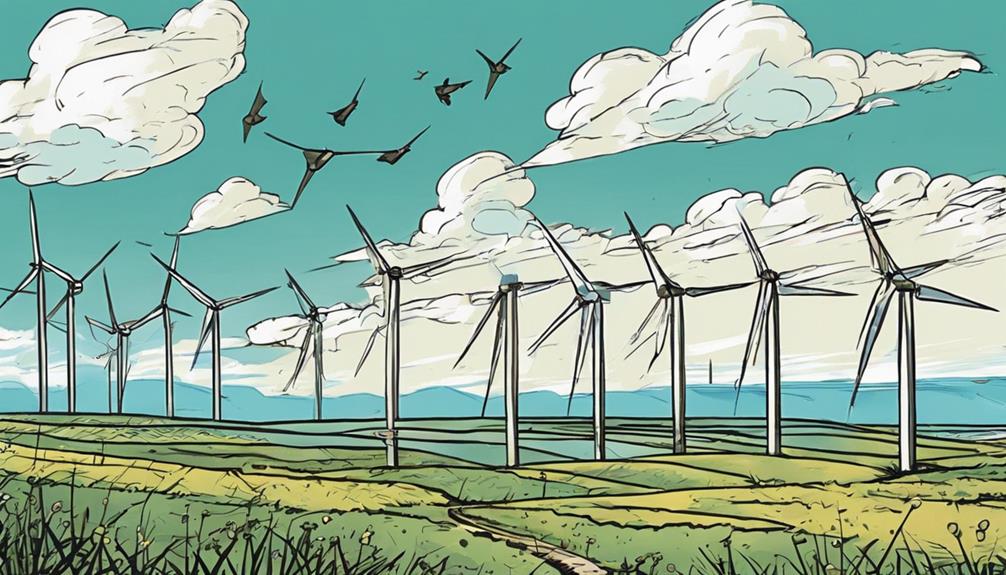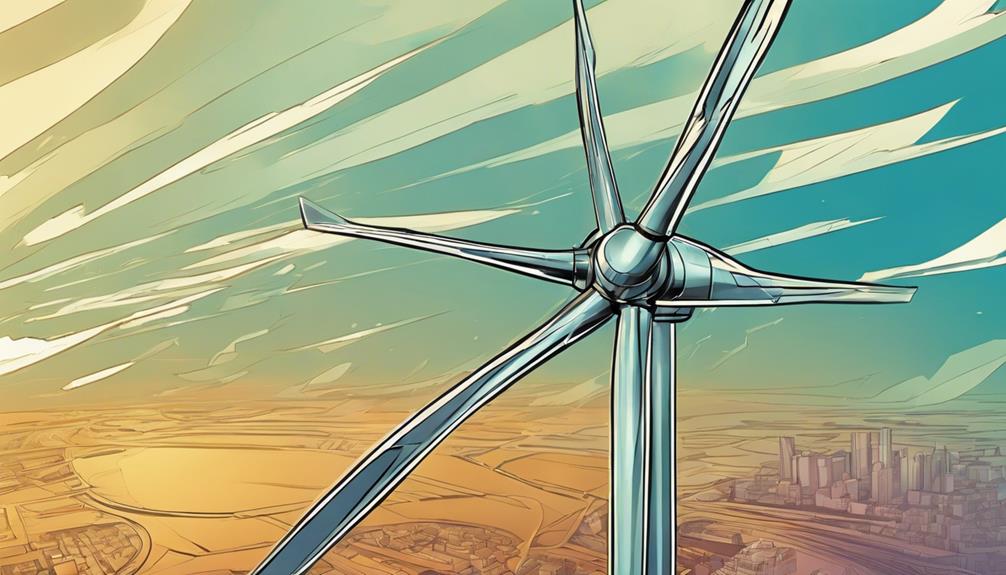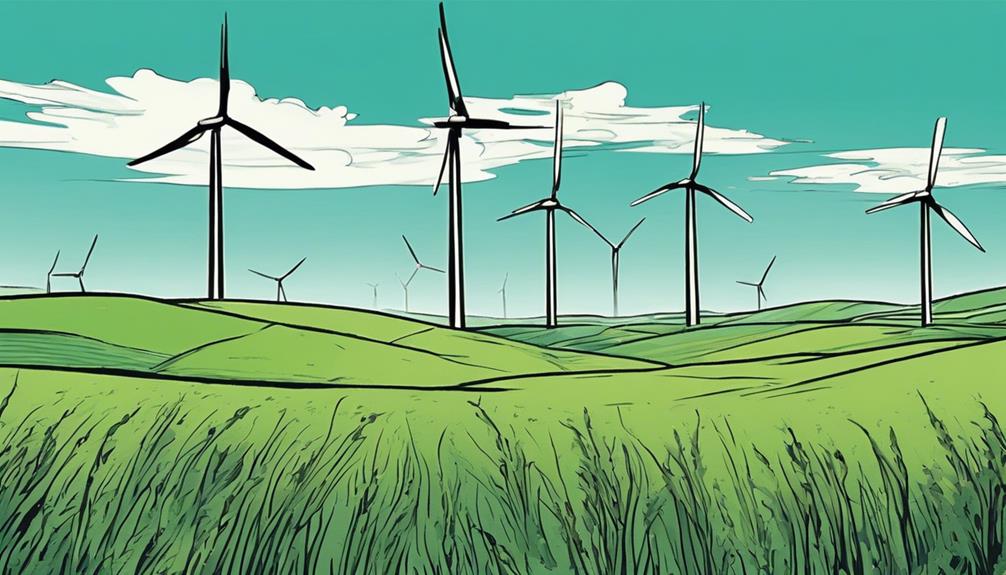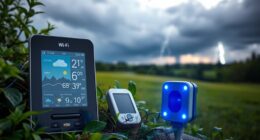When it comes to harnessing wind power, I know that a solid infrastructure foundation is essential. It's important for efficient, reliable, and sustainable energy production. From wind turbine construction to grid connection and transmission, every detail matters. Strategic wind farm siting and energy storage integration are also critical components. To guarantee peak performance, proactive maintenance strategies are a necessity. By getting these infrastructure essentials right, we can unleash the full potential of wind power. Now, let's dive deeper into the specifics of each component to see how they all come together to make wind energy a reality.
Key Takeaways
- A solid foundation design and accurate soil assessment are crucial for wind turbine stability and support.
- High-voltage transmission lines and transformers are necessary for efficient energy transmission over long distances.
- Strategic wind farm siting involves analyzing wind patterns and speeds to optimize energy potential and minimize environmental impacts.
- Energy storage systems, such as batteries and pumped hydro-storage, are essential for balancing wind power intermittency and ensuring grid stability.
- Upgrading and expanding the transmission network is necessary to accommodate increased wind energy capacity and ensure reliable electricity flow.
Wind Turbine Construction Fundamentals
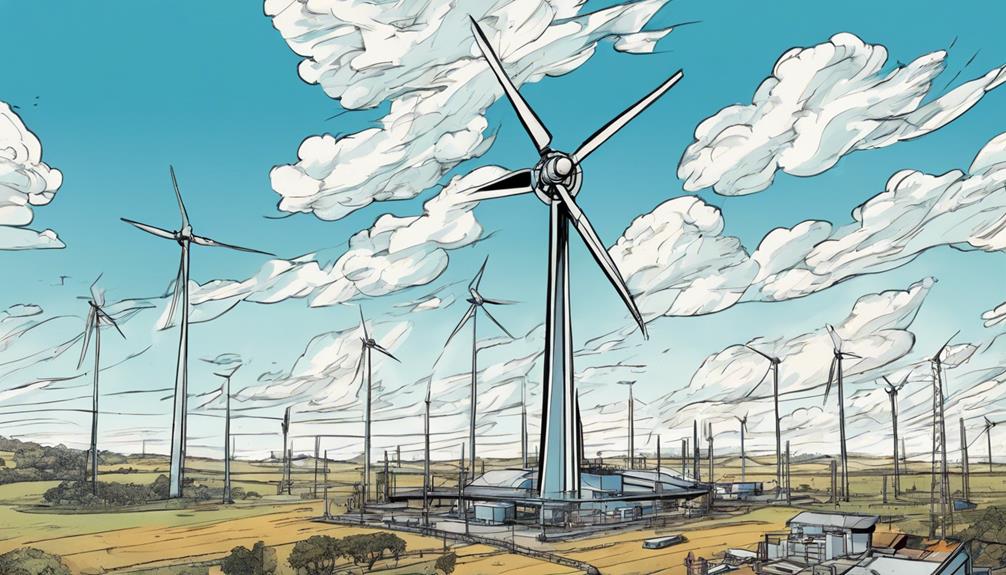
When it comes to wind turbine construction fundamentals, a solid foundation design is crucial, as it directly impacts the stability and support of the entire structure. I've seen firsthand how critical it's to assess soil conditions accurately, ensuring the foundation can withstand harsh weather and heavy turbine components.
Next, turbine assembly requires meticulous attention to detail, aligning and securing the tower, nacelle, and blades for efficient and safe operation. It's impressive how these massive structures come together, but it's the little details that make all the difference.
Grid Connection and Transmission
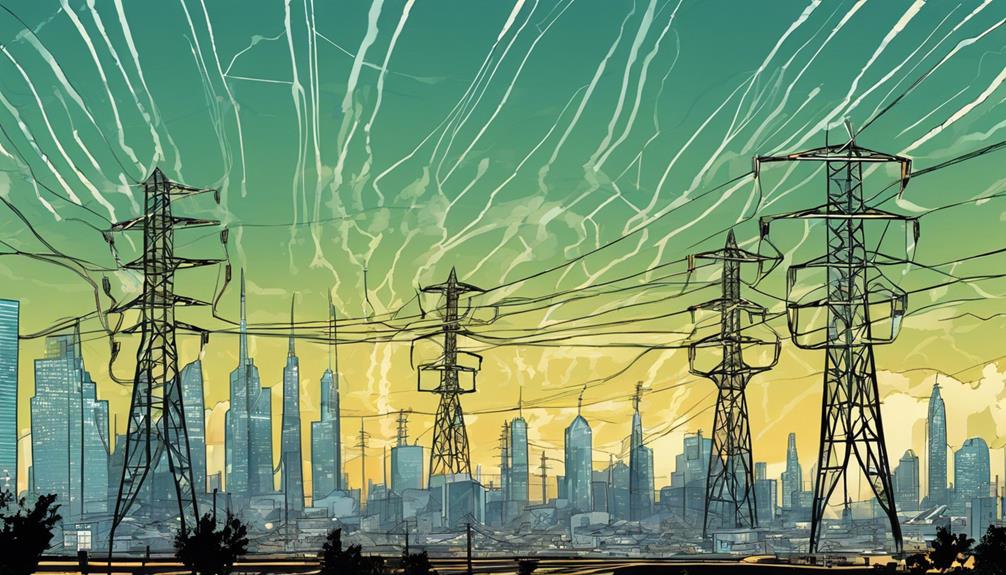
I'm now focusing on the critical step of connecting wind turbines to the power grid, where robust infrastructure is essential for efficiently transmitting wind-generated electricity. This allows us to tap into the full potential of wind power and integrate it into the existing grid.
To achieve this, we need to upgrade and expand our transmission network to accommodate the increased capacity from wind energy.
Here are the key components of this infrastructure:
- High-voltage transmission lines: Carrying electricity over long distances with minimal loss of energy.
- Transformers: Adjusting voltage levels to match transmission and distribution requirements.
- Smart grid technologies: Facilitating real-time monitoring and control for efficient energy transmission.
- Substations: Connecting and disconnecting transmission lines, transformers, and distribution lines to guarantee a stable flow of electricity.
Strategic Wind Farm Siting
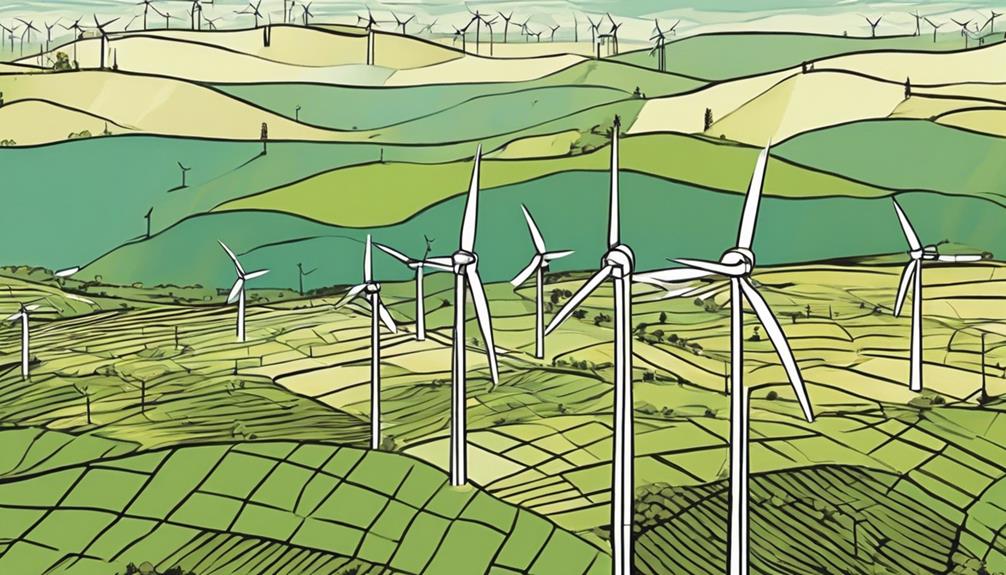
With the transmission infrastructure in place, we can now focus on strategically selecting wind farm locations that maximize energy generation while minimizing environmental impacts. Thorough analysis of wind patterns and speeds is essential for site selection.
I consider factors like wind direction, speed, and turbulence to identify areas with ideal energy potential. Simultaneously, I implement mitigation measures to reduce potential environmental impacts, ensuring strategic location and design.
This careful planning enables me to minimize negative environmental effects, such as noise pollution, habitat disruption, and visual disturbance. By siting wind farms in areas with high wind resources and low environmental sensitivity, I can optimize the full potential of wind energy while preserving our ecosystem's integrity.
Energy Storage and Integration
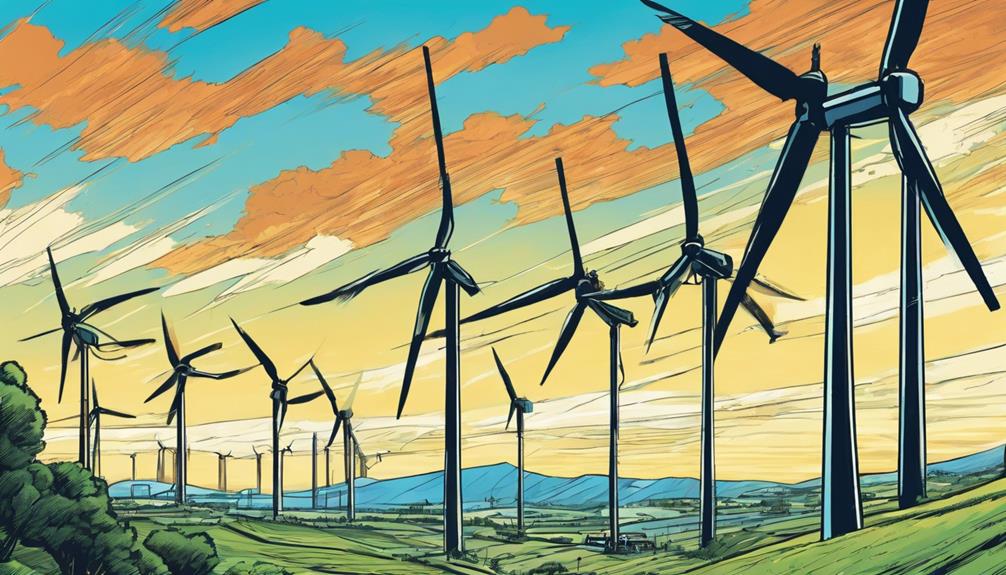
To guarantee a stable and reliable clean energy supply, I incorporate energy storage systems that balance the intermittency of wind power, storing excess energy for use during low production periods. This integration is essential for maximizing wind turbine energy utilization and enhancing grid stability.
Here are some key considerations for energy storage and integration:
- Battery Storage: Utilizing advanced battery technologies to store excess energy for later use.
- Pumped Hydro-Storage: Storing energy by pumping water from a lower reservoir to an upper reservoir during off-peak hours.
- Compressed Air Energy Storage: Storing energy by compressing air in underground caverns during off-peak hours.
- Flywheel Energy Storage: Storing energy kinetically in flywheels, which can be released quickly to stabilize the grid.
Proactive Maintenance Strategies
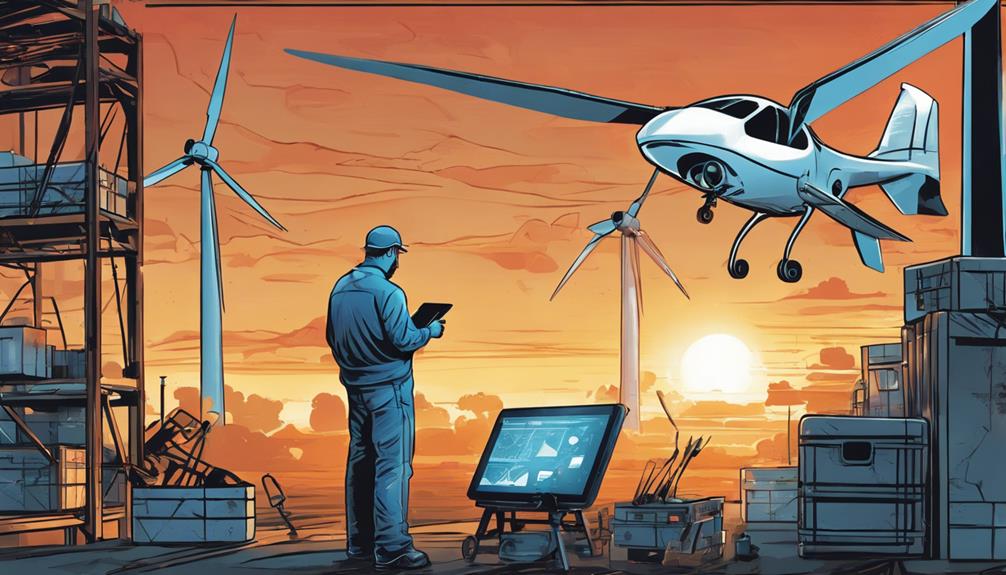
TEXT:
Venus is the second planet from the Sun, orbiting it every 224.7 Earth days. With a surface temperature of 471 °C, Venus is the hottest planet in our solar system. It is often called Earth's "sister planet" due to their similar size and composition. The atmosphere of Venus is mainly made up of carbon dioxide, with clouds of sulfuric acid. The planet has no moons and rotates in the opposite direction to most other planets. Venus is named after the Roman goddess of love and beauty. It is visible to the naked eye and has been known since ancient times.
Mars is the fourth planet from the Sun and is often referred to as the "Red Planet" due to its reddish appearance. Mars has a thin atmosphere primarily composed of carbon dioxide, and its surface features include deserts, valleys, and polar ice caps. The planet is home to the tallest volcano and the largest canyon in the solar system. Mars has two moons, Phobos and Deimos, which are thought to be captured asteroids. The exploration of Mars has been a major focus for space agencies due to its potential to support life or to be colonized by humans in the future.
Jupiter is the largest planet in our solar system, with a mass more than twice that of all the other planets combined. It is known for its colorful bands of clouds and the Great Red Spot, a giant storm that has been raging for centuries. Jupiter has 79 known moons, including the four largest Galilean moons discovered by Galileo Galilei. The planet is primarily composed of hydrogen and helium and has a strong magnetic field. Jupiter plays a crucial role in protecting Earth from comets and asteroids, due to its massive size and gravitational pull.
Saturn is the sixth planet from the Sun and is famous for its stunning ring system made up of ice particles and rocky debris. Saturn's rings are thought to be the remnants of a destroyed moon or captured comets. The planet is mostly composed of hydrogen and helium, with a small rocky core. Saturn has 82 known moons, with Titan being the largest and most well-known. The exploration of Saturn and its moons has provided valuable insights into the formation and evolution of our solar system.
Frequently Asked Questions
How Do Wind Farms Contribute to Local Economic Development?
"I've seen how wind farms create jobs, stimulate local economies, and increase tax revenue. They also attract new businesses and industries, fostering growth and development in surrounding areas, ultimately benefiting the community."
Can Wind Turbines Be Recycled at the End of Their Lifespan?
I'd say yes, wind turbines can be recycled at the end of their lifespan. In fact, recyclable materials like steel, copper, and fiberglass make up a significant portion of turbine components, making recycling a viable and sustainable option.
What Role Does Artificial Intelligence Play in Wind Farm Optimization?
"Did you know that AI can increase wind farm efficiency by up to 20%? I'm excited to share how AI optimizes wind farms by analyzing real-time data to predict energy output, detect anomalies, and automate maintenance, ultimately maximizing energy production!"
How Do Wind Farms Impact Local Wildlife Migration Patterns?
As I explore wind farm Impact, I've found that turbines can disrupt local wildlife migration patterns, especially for birds and bats, by altering habitat and creating barriers.
Can Wind Energy Be Used for Hydrogen Fuel Cell Production?
"I'm excited to explore the possibility of using wind energy for hydrogen fuel cell production. Yes, it's a viable option – excess wind energy can be utilized to split water into hydrogen and oxygen through electrolysis."
What are the key infrastructure essentials needed to effectively harness wind power?
In order to effectively harness and maximize the potential of unleashing wind energy power, key infrastructure essentials are essential. This includes a robust network of wind turbines, efficient transmission lines, and smart grid technology to ensure seamless integration and distribution of the generated power. Additionally, storage solutions and backup systems are crucial for uninterrupted supply.
Conclusion
As I reflect on the intricate dance of wind power infrastructure, I'm left wondering: what's the point of harnessing the wind if we can't store it for when we need it most?
Thankfully, innovative solutions are emerging to tackle this issue.
By mastering the essentials of turbine construction, grid connection, strategic siting, energy storage, and proactive maintenance, we can reveal the full potential of wind power and create a cleaner, more sustainable future.
